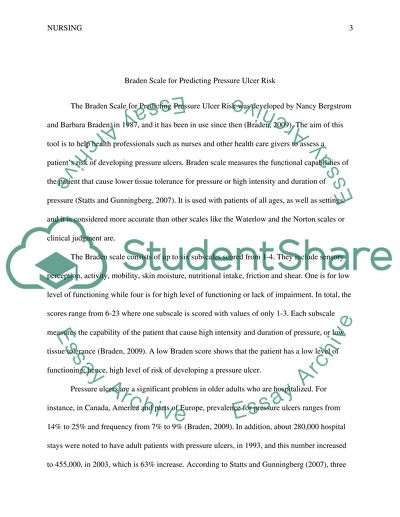Braden Scale for Predicting Pressure Ulcer Risk Research Paper. Retrieved from https://studentshare.org/nursing/1443505-braden-scale-for-predicting-pressure-ulcer-risk
Braden Scale for Predicting Pressure Ulcer Risk Research Paper. https://studentshare.org/nursing/1443505-braden-scale-for-predicting-pressure-ulcer-risk.


